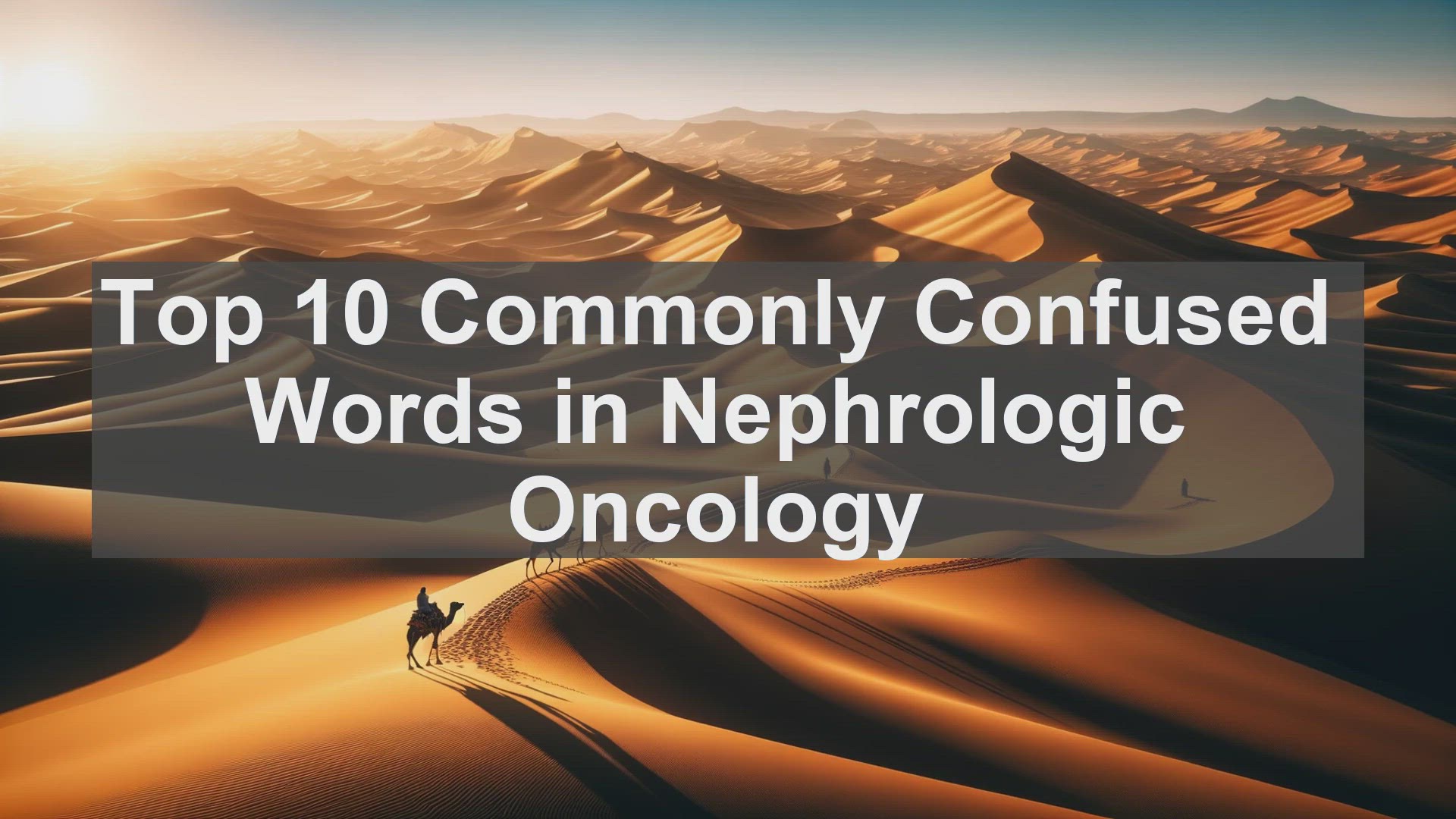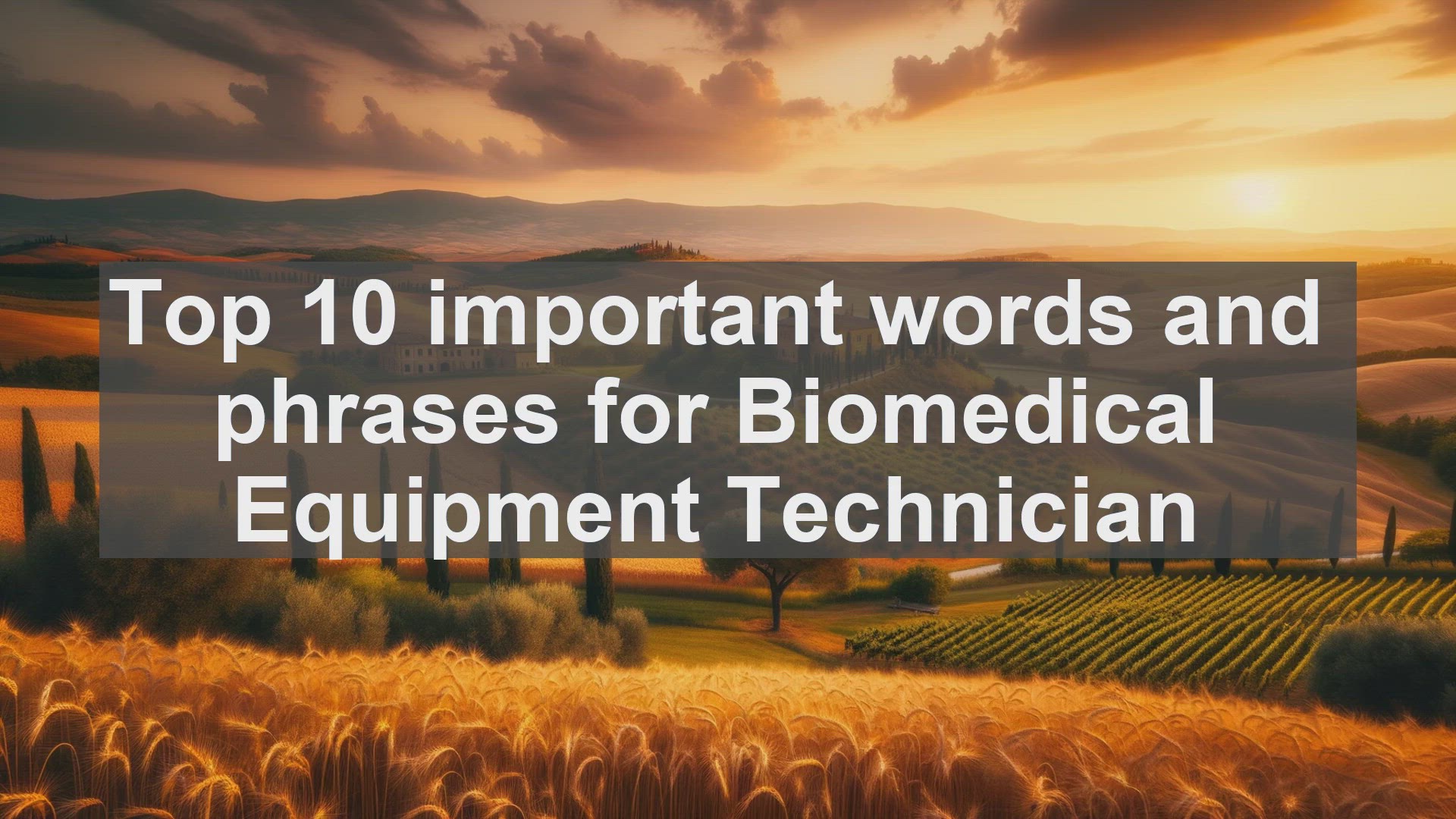
Daily English Listening Practice: Adrienne Young and local f...
32K views · Jul 2, 2023 englishteststore.net
Daily English Listening Practice: The topic about Adrienne Young and local farming - with questions and answers. Adrienne Young wants people to know that she supports the movement in America to increase local farming. Let's listen and enjoy - Practice online: https://englishteststore.net/index.php?option=com_content&view=category&id=657&Itemid=1137 - Thank you for watching! Please subscribe, share, and like the video. #englishlistening , #englishlisteningpractice #dailylistening #dailylisten EnglishTestStore ►https://englishteststore.net/ Facebook ►https://www.facebook.com/englishteststore.net/ Twitter ►https://twitter.com/englishteststor

Daily English Listening Practice: Government budget
1K views · Jul 13, 2023 englishteststore.net
Daily English Listening Practice topic today is Government budget - Practice online: https://englishteststore.net/index.php?option=com_content&view=category&id=657&Itemid=1137 - Thank you for watching! Please subscribe, share, and like the video. #englishlistening , #englishlisteningpractice #dailylistening #dailylisten EnglishTestStore ►https://englishteststore.net/ Facebook ►https://www.facebook.com/englishteststore.net/ Twitter ►https://twitter.com/englishteststor

Daily English Listening Practice: Rice plants and cholera va...
158 views · Jul 9, 2023 englishteststore.net
Daily English Listening Practice topic today is Rice plants and cholera vaccine. - Practice online: https://englishteststore.net/index.php?option=com_content&view=category&id=657&Itemid=1137 - Thank you for watching! Please subscribe, share, and like the video. #englishlistening , #englishlisteningpractice #dailylistening #dailylisten EnglishTestStore ►https://englishteststore.net/ Facebook ►https://www.facebook.com/englishteststore.net/ Twitter ►https://twitter.com/englishteststor

Daily English Listening Practice: The world's financial ...
3K views · Jul 4, 2023 englishteststore.net
Daily English Listening Practice about the topic: The NYSE Group and Euronext the world's financial exchanges - Practice online: https://englishteststore.net/index.php?option=com_content&view=category&id=657&Itemid=1137 - Thank you for watching! Please subscribe, share, and like the video. #englishlistening , #englishlisteningpractice #dailylistening #dailylisten EnglishTestStore ►https://englishteststore.net/ Facebook ►https://www.facebook.com/englishteststore.net/ Twitter ►https://twitter.com/englishteststor

Daily English Listening Practice: Fulbright Program
3K views · Jul 7, 2023 englishteststore.net
Daily English Listening Practice topic today is Fulbright Program. - Practice online: https://englishteststore.net/index.php?option=com_content&view=category&id=657&Itemid=1137 - Thank you for watching! Please subscribe, share, and like the video. #englishlistening , #englishlisteningpractice #dailylistening #dailylisten EnglishTestStore ►https://englishteststore.net/ Facebook ►https://www.facebook.com/englishteststore.net/ Twitter ►https://twitter.com/englishteststor

Daily English Listening Practice: Adrienne Young and local f...
32K views · Jul 2, 2023 englishteststore.net
Daily English Listening Practice: The topic about Adrienne Young and local farming - with questions and answers. Adrienne Young wants people to know that she supports the movement in America to increase local farming. Let's listen and enjoy - Practice online: https://englishteststore.net/index.php?option=com_content&view=category&id=657&Itemid=1137 - Thank you for watching! Please subscribe, share, and like the video. #englishlistening , #englishlisteningpractice #dailylistening #dailylisten EnglishTestStore ►https://englishteststore.net/ Facebook ►https://www.facebook.com/englishteststore.net/ Twitter ►https://twitter.com/englishteststor

Top 10 Commonly Confused Words in Microbial Biotechnology
2K views · Dec 5, 2023 englishteststore.net
Top 10 Commonly Confused Words in Microbial Biotechnology 1. Fermentation vs. Respiration Fermentation and respiration are often used interchangeably, but they have distinct meanings. Fermentation is an anaerobic process that breaks down organic compounds, while respiration is an aerobic process that involves the consumption of oxygen. Understanding this difference is essential for designing bioprocesses effectively. 2. Plasmid vs. Chromosome Plasmids and chromosomes are both genetic elements, but they differ in several ways. Plasmids are small, circular DNA molecules that exist outside the main chromosome. They often carry accessory genes. In contrast, chromosomes are larger, linear DNA molecules that contain the organism's essential genetic information. Differentiating between these two is crucial during genetic engineering experiments. 3. Antibiotic vs. Antimicrobial While both terms refer to substances that inhibit the growth of microorganisms, there's a subtle difference. Antibiotics specifically target bacteria, whereas antimicrobials encompass a broader range, including bacteria, viruses, fungi, and parasites. This distinction is vital when choosing the right treatment option. 4. Bioreactor vs. Fermenter Bioreactors and fermenters are often used synonymously, but they have slight variations. A bioreactor is a vessel that provides a controlled environment for biological reactions, including fermentation. On the other hand, a fermenter is a specific type of bioreactor designed for microbial fermentation. Recognizing this dissimilarity aids in selecting the appropriate equipment for a given process. 5. Transformation vs. Transfection Transformation and transfection are techniques used to introduce foreign DNA into cells. However, they differ based on the type of cells involved. Transformation is the uptake of DNA by bacteria, while transfection refers to the introduction of DNA into eukaryotic cells. Understanding this discrepancy is crucial when working with different organisms. 6. Biodegradation vs. Bioremediation Biodegradation and bioremediation are often used interchangeably, but they have distinct meanings. Biodegradation is the natural breakdown of organic compounds by microorganisms, while bioremediation refers to the use of microorganisms to clean up pollutants in the environment. Recognizing this difference is essential when addressing environmental issues. 7. Genotype vs. Phenotype Genotype and phenotype are fundamental concepts in genetics. Genotype refers to the genetic makeup of an organism, while phenotype encompasses its observable characteristics. Distinguishing between these two is crucial for understanding how genes translate into traits. 8. Recombinant DNA vs. Synthetic DNA Recombinant DNA and synthetic DNA are both artificially created, but they differ in their origins. Recombinant DNA is formed by combining DNA from different sources, often through genetic engineering techniques. Synthetic DNA, on the other hand, is entirely human-made, often through chemical synthesis. Recognizing this dissimilarity aids in understanding the different applications of these DNA types. 9. Homologous vs. Heterologous Expression Homologous and heterologous expression are techniques used to produce proteins. Homologous expression involves expressing a gene in the same organism it originates from, while heterologous expression refers to expressing a gene in a different organism. Understanding this distinction is crucial when choosing the most suitable expression system. 10. Bioprocess vs. Biomanufacturing Bioprocess and biomanufacturing are related terms, but they have different scopes. Bioprocess refers to the overall process of using living organisms or their components to produce desired products. Biomanufacturing, on the other hand, specifically focuses on the large-scale production of biopharmaceuticals and other bioproducts. Recognizing this dissimilarity aids in understanding the different stages of product development. Conclusion And there you have it! The top 10 commonly confused words in microbial biotechnology. By clarifying these terms, we hope to enhance your understanding of the subject. Remember, a strong foundation in these concepts is essential for a successful career in the field. Thank you for watching, and we'll see you in the next video!

Top 10 Commonly Confused Words in Nephrologic Oncology
94 views · Dec 5, 2023 englishteststore.net
Top 10 Commonly Confused Words in Nephrologic Oncology Introduction Hello students! In the field of nephrologic oncology, there are several words that often cause confusion. Understanding these terms is crucial for accurate communication and patient care. Today, we'll explore the top 10 commonly confused words in this specialized branch of medicine. Section 1: Benign vs. Malignant Let's start with a fundamental distinction: benign and malignant. While both terms refer to tumors, they have vastly different implications. Benign tumors are non-cancerous, meaning they do not invade nearby tissues or spread to other parts of the body. Malignant tumors, on the other hand, are cancerous and can metastasize, posing a significant threat. It's crucial to differentiate between the two for appropriate treatment decisions. Section 2: Metastasis vs. Invasion Metastasis and invasion are often used interchangeably, but they have distinct meanings. Invasion refers to the local spread of cancer cells into nearby tissues. Metastasis, however, involves the migration of cancer cells to distant sites through the bloodstream or lymphatic system. While invasion is concerning, metastasis indicates a more advanced stage of the disease. Section 3: Neoplasm vs. Tumor Neoplasm and tumor are frequently used interchangeably, but there's a subtle difference. Neoplasm refers to an abnormal growth of cells, which can be either benign or malignant. Tumor, on the other hand, specifically denotes a swelling caused by an abnormal mass of tissue. So, while all tumors are neoplasms, not all neoplasms are tumors. Section 4: Palliative vs. Curative When it comes to treatment goals, palliative and curative approaches are often considered. Palliative care aims to improve the quality of life for patients, focusing on symptom management and emotional support. Curative treatment, on the other hand, targets the root cause of the disease, aiming for a complete cure. It's essential to balance these approaches based on the patient's needs and prognosis. Section 5: Biopsy vs. Excision In diagnostic procedures, biopsies and excisions are commonly performed. A biopsy involves the removal of a small tissue sample for examination, often done using a needle or endoscope. Excision, on the other hand, refers to the complete removal of a tumor or organ. While biopsies help in diagnosis, excisions are often therapeutic, especially for localized tumors. Section 6: Adjuvant vs. Neoadjuvant In the context of cancer treatment, adjuvant and neoadjuvant therapies are crucial. Adjuvant therapy is given after the primary treatment, such as surgery, to eliminate any remaining cancer cells and reduce the risk of recurrence. Neoadjuvant therapy, on the other hand, is administered before the primary treatment, often to shrink the tumor and facilitate surgical removal. Both approaches have their specific indications and benefits. Section 7: Remission vs. Cure When discussing treatment outcomes, remission and cure are often mentioned. Remission refers to the absence of detectable cancer, either partial or complete, in response to treatment. Cure, on the other hand, implies a permanent eradication of the disease, with no chance of recurrence. While remission is a positive outcome, achieving a cure is the ultimate goal in many cases. Section 8: Prognosis vs. Diagnosis Prognosis and diagnosis are distinct but interconnected aspects of patient care. Diagnosis involves identifying the specific disease or condition a patient has, often through tests and examinations. Prognosis, on the other hand, focuses on predicting the likely course and outcome of the disease. While a diagnosis provides a starting point, the prognosis guides treatment decisions and discussions about the future. Section 9: Recurrence vs. Relapse Recurrence and relapse are terms used to describe the return of cancer after a period of remission. Recurrence refers to the reappearance of cancer in the same site as the original tumor. Relapse, on the other hand, implies the return of cancer after a period of complete remission. Both situations require prompt evaluation and consideration of further treatment options. Section 10: Chemotherapy vs. Immunotherapy Finally, let's discuss two essential treatment modalities: chemotherapy and immunotherapy. Chemotherapy involves the use of drugs to kill or inhibit the growth of cancer cells. Immunotherapy, on the other hand, harnesses the body's immune system to target and destroy cancer cells.

Top 10 Verbs for Discussing Digital Identity and Online Priv...
1K views · Dec 7, 2023 englishteststore.net
Top 10 Verbs for Discussing Digital Identity and Online Privacy 1. Authenticate: Ensuring Security To authenticate means to verify the identity of someone or something. In the digital realm, it's about confirming that a user or a system is who or what they claim to be. From two-factor authentication to biometrics, this verb is at the core of online security. 2. Encrypt: Safeguarding Information Encryption is like a secret code for your data. When you encrypt information, you're converting it into an unreadable format, which can only be deciphered with the right key. It's a vital step in protecting sensitive data from unauthorized access. 3. Monitor: Staying Vigilant In the digital landscape, monitoring is crucial. It involves keeping a watchful eye on activities, be it your social media accounts or the network traffic. By monitoring, you can detect any unusual or potentially harmful behavior and take appropriate action. 4. Consent: Granting Permission Consent is all about giving your permission. In the online world, it's often related to data collection and usage. Whether it's accepting cookies or sharing personal information, being aware of when and how to give consent is essential for your privacy. 5. Share: Exchanging Information Sharing is a fundamental aspect of the internet. From posting on social media to collaborating on projects, it's how we connect and communicate. However, it's crucial to be mindful of what and with whom you're sharing, as it can have long-term implications. 6. Delete: Removing Data Deleting is not just about removing something. In the digital realm, it's about ensuring that data is permanently erased, with no traces left behind. Whether it's an old account or sensitive information, proper deletion is vital for maintaining your privacy. 7. Educate: Spreading Awareness Education is a powerful tool in the digital age. By educating yourself and others about online risks, best practices, and privacy measures, you're contributing to a safer and more informed digital community. 8. Report: Flagging Concerns When you come across something suspicious or potentially harmful online, reporting it is crucial. Whether it's cyberbullying or a phishing attempt, reporting helps authorities and platforms take action, ensuring a safer online environment for everyone. 9. Update: Staying Current In the fast-paced digital world, updates are frequent. Whether it's your operating system or an app, staying up to date with the latest versions is essential. Updates often include security patches, fixing vulnerabilities and ensuring a more secure experience. 10. Respect: Valuing Privacy Respect is a verb that goes beyond the digital realm. When it comes to privacy, it's about acknowledging and honoring someone's boundaries. From not sharing someone's personal information without consent to using secure channels for communication, respect is key. Conclusion: Enhancing Your Digital Vocabulary By incorporating these verbs into your digital vocabulary, you'll be better equipped to discuss and navigate the ever-evolving landscape of digital identity and online privacy. Remember, words have power, and choosing the right ones can make a significant impact. Happy learning, and stay safe in the digital world!

Top 10 English Idioms for Animation Cartoonist
15K views · Dec 9, 2023 englishteststore.net
Top 10 English Idioms for Animation Cartoonist 1. Drawing a Blank We've all experienced those moments when inspiration seems to elude us. In animation, this is often referred to as 'drawing a blank.' It's that frustrating feeling of not being able to come up with ideas or solutions. But fear not, as it's a common occurrence in the creative process. Embrace it, take a break, and soon enough, your imagination will be back in full swing. 2. Pushing the Envelope Animation is all about pushing boundaries, and the idiom 'pushing the envelope' perfectly encapsulates this. It means to go beyond the norm, to explore uncharted territories. As a cartoonist, don't be afraid to take risks, to challenge the status quo. It's often in those daring moments that true innovation happens. 3. Adding a Splash of Color Color is a powerful tool in animation. It can evoke emotions, set the mood, and even convey meaning. The idiom 'adding a splash of color' goes beyond the literal act of coloring. It signifies adding vibrancy, liveliness, and depth to your work. So, next time you're animating a scene, think not just in terms of lines and shapes, but also the hues that will bring it to life. 4. Putting on a Show Animation is, at its core, a form of storytelling. And what's a good story without captivating characters? The idiom 'putting on a show' refers to creating characters that are not just visually appealing but also have depth and personality. Each movement, each expression should contribute to the narrative, making it a truly immersive experience for the audience. 5. The Devil is in the Details When it comes to animation, the smallest details can make a world of difference. The idiom 'the devil is in the details' emphasizes the importance of paying attention to even the most minute aspects of your work. From the subtlest of gestures to the tiniest of shadows, it's these nuances that elevate your animation from good to exceptional. 6. A Picture is Worth a Thousand Words In the realm of animation, visuals reign supreme. The idiom 'a picture is worth a thousand words' holds true here. Instead of relying solely on dialogue, let your visuals do the talking. A well-crafted scene, with its composition, lighting, and movement, can convey emotions and narratives more powerfully than any words ever could. 7. Finding the Right Balance Animation is a delicate balance of various elements. From timing to spacing, every aspect needs to be carefully considered. The idiom 'finding the right balance' perfectly captures this. It's about ensuring that no single element overpowers the others, that everything works in harmony to create a seamless and engaging animation. 8. The Sky's the Limit Animation is a realm of infinite possibilities. The idiom 'the sky's the limit' reflects this boundless nature. As a cartoonist, you're not confined by the laws of reality. Let your imagination soar, explore new horizons, and create worlds that defy the constraints of the physical realm. After all, in animation, anything is possible. 9. Stepping Outside the Box To truly stand out in the world of animation, you need to be willing to step outside your comfort zone. The idiom 'stepping outside the box' encapsulates this idea. It means breaking free from conventions, exploring new techniques, and constantly pushing yourself to grow and evolve as an artist. It's in those daring moments that true innovation happens. 10. Bringing it Full Circle Every animation, every story has a beginning, a middle, and an end. The idiom 'bringing it full circle' signifies the completion of this journey. It's about ensuring that your narrative comes together seamlessly, that every element, every character arc, is resolved in a satisfying manner. It's this sense of closure that leaves a lasting impact on the audience. Conclusion: The Language of Animation Unveiled And there you have it, the top 10 English idioms that every aspiring cartoonist should know. From 'drawing a blank' to 'bringing it full circle,' these expressions not only add depth and character to your work but also serve as a testament to the rich language of animation. So, as you embark on your creative journey, remember to not just master the art itself but also the language that brings it to life. Happy animating!

Market opening in economics and finance
143 views · Feb 5, 2024 englishteststore.net
Hello everyone! Today, we delve into the fascinating world of economics and finance. One crucial aspect of this domain is 'market opening.' It refers to the specific time when a financial market commences its operations for the day. Let's explore this further!

Market opening in economics and finance
143 views · Feb 5, 2024 englishteststore.net
Hello everyone! Today, we delve into the fascinating world of economics and finance. One crucial aspect of this domain is 'market opening.' It refers to the specific time when a financial market commences its operations for the day. Let's explore this further!

Top 10 important words and phrases for Biomedical Equipment ...
159 views · Feb 23, 2024 englishteststore.net
Top 10 important words and phrases for Biomedical Equipment Technician Introduction to Biomedical Equipment Technicians Hello everyone, and welcome to today's video! Have you ever wondered about the individuals responsible for maintaining and repairing medical equipment? Well, they are called Biomedical Equipment Technicians, or BMETs for short. These professionals play a crucial role in ensuring that medical devices are functioning optimally, which directly impacts patient care. Today, we'll be exploring the top 10 words and phrases that every BMET should be familiar with. Let's dive in! 1. Preventive Maintenance Preventive maintenance refers to the routine checks and actions taken to prevent equipment failure. It involves tasks like cleaning, calibrating, and inspecting devices to ensure they are in good working order. By conducting regular preventive maintenance, BMETs can identify potential issues early on, reducing the chances of unexpected breakdowns. 2. Troubleshooting Troubleshooting is a critical skill for BMETs. It involves identifying and resolving equipment malfunctions or issues. This can include anything from software errors to hardware failures. A skilled BMET can efficiently diagnose the problem and implement the necessary repairs, minimizing downtime and ensuring the device is back in operation as soon as possible. 3. Calibration Calibration refers to the process of adjusting and verifying the accuracy of a device's measurements. This is particularly important for medical equipment, as precise readings are crucial for accurate diagnoses and treatment. BMETs often use specialized tools and procedures to calibrate devices, ensuring they provide reliable data. 4. Biocompatibility Biocompatibility is the ability of a material or device to interact with living tissue without causing harm. When it comes to medical devices, biocompatibility is of utmost importance. BMETs need to be aware of the materials used in different devices and their potential effects on the human body. This knowledge helps in selecting the right equipment for specific applications and minimizing the risk of adverse reactions. 5. FDA Regulations The Food and Drug Administration, or FDA, is responsible for regulating medical devices in the United States. BMETs need to have a good understanding of the FDA's guidelines and requirements. This includes aspects like device classification, quality control, and adverse event reporting. Adhering to these regulations is essential for ensuring patient safety and compliance. 6. Equipment Life Cycle Every piece of medical equipment has a life cycle, which includes stages like planning, acquisition, maintenance, and retirement. BMETs are involved in various aspects of this life cycle, from evaluating equipment for purchase to decommissioning devices that are no longer in use. Understanding the equipment life cycle helps in making informed decisions and optimizing resource allocation. 7. HIPAA HIPAA, or the Health Insurance Portability and Accountability Act, is a crucial legislation that protects patient privacy and data security. BMETs often work with devices that store or transmit patient information. They need to be well-versed in HIPAA's requirements, such as data encryption, access controls, and breach notification. Compliance with HIPAA is vital for maintaining patient trust and avoiding legal issues. 8. In-Service Training In-service training refers to the educational programs and workshops provided to healthcare staff on the proper use and maintenance of equipment. BMETs are often involved in conducting these training sessions. Effective in-service training ensures that healthcare professionals can utilize the equipment to its full potential, reducing the risk of errors and enhancing patient care. 9. Documentation Accurate and comprehensive documentation is a fundamental aspect of a BMET's work. It includes records of equipment maintenance, repairs, and any modifications made. This documentation serves multiple purposes, such as tracking the device's history, providing evidence of compliance, and aiding in future troubleshooting. Good documentation practices are essential for maintaining a well-organized and efficient biomedical department. 10. Professional Development The field of biomedical equipment technology is constantly evolving, with new devices and technologies being introduced regularly. To stay current and enhance their skills, BMETs need to actively engage in professional development activities. This can include attending conferences, pursuing certifications, or participating in online forums. By continuously learning and growing, BMETs can provide the best possible support to healthcare facilities. Conclusion And there you have it - the top 10 words and phrases that every Biomedical Equipment Technician should know. From preventive maintenance to professional development, each of these concepts plays a vital role in the day-to-day work of a BMET. If you're considering a career in this field, make sure to familiarize yourself with these terms. Thank you for watching, and we'll see you in the next video!

Top 10 important words and phrases for Excavating Machine Op...
3K views · Feb 25, 2024 englishteststore.net
Top 10 important words and phrases for Excavating Machine Operator Introduction: The Importance of Vocabulary Hello, students! As an excavating machine operator, your work revolves around complex machinery and construction sites. To excel in this field, having a strong vocabulary is vital. It not only helps you communicate effectively but also ensures safety and efficiency. Today, we'll explore the top 10 words and phrases that will serve as the foundation of your knowledge. Let's get started! 1. Trenching Trenching refers to the process of digging long, narrow excavations in the ground. It's commonly used in construction projects to lay pipes, cables, or create foundations. As an operator, you'll often be involved in trenching operations, so understanding the techniques and safety protocols is crucial. 2. Grade In excavation, grade refers to the desired level or slope of the terrain. It's essential to maintain the correct grade to ensure proper drainage, stability, and adherence to project specifications. As an operator, you'll frequently encounter terms like 'cut to grade' or 'fill to grade,' indicating the need to achieve a specific elevation. 3. Backfilling Backfilling is the process of refilling an excavated area, often using soil or other materials. It's done to restore the ground's stability, support structures, or improve drainage. Understanding the proper backfilling techniques is crucial to avoid issues like settling or erosion. 4. Bucket Capacity The bucket capacity refers to the volume of material a machine's bucket can hold. It's typically measured in cubic yards or meters. Knowing the bucket capacity is essential for planning and estimating the amount of material that can be moved in a given time, ensuring efficient operations. 5. Boom and Stick The boom and stick are key components of an excavator. The boom is the long, vertical arm, while the stick, also known as the dipper, is attached to the bucket. Understanding their functions, range of motion, and limitations is crucial for precise and safe operation. 6. Swing Radius The swing radius refers to the circular area that an excavator's upper structure covers when it rotates. It's important to be aware of the swing radius to ensure there are no obstacles or personnel within that zone, preventing accidents. 7. Ground Engaging Tools (GETs) GETs are the attachments on the bucket's edge that come in direct contact with the ground. Examples include teeth, blades, or rippers. Understanding the different types of GETs and when to use them is crucial for efficient excavation and minimizing wear on the bucket. 8. Overburden Overburden refers to the layer of soil, rock, or other materials that covers a desired deposit, such as a mineral or ore. As an operator, you may encounter overburden removal tasks, which require careful planning and consideration of environmental factors. 9. Articulation Articulation refers to the ability of certain machines, like articulated trucks, to bend in the middle. This feature enhances maneuverability, especially in tight spaces or uneven terrain. Understanding how to utilize the machine's articulation is essential for safe and efficient operation. 10. Pre-Shift Inspection Before starting any shift, it's crucial to conduct a thorough inspection of the machine. This includes checking fluid levels, tires or tracks, lights, and safety features. A pre-shift inspection helps identify any potential issues or hazards, ensuring a safe working environment. Conclusion: Building Your Vocabulary By familiarizing yourself with these essential words and phrases, you're taking a significant step towards becoming a knowledgeable excavating machine operator. Remember, continuous learning and practical experience are equally important. So, keep exploring, asking questions, and honing your skills. Best of luck on your journey in this exciting field!

GRE Vocabulary Lesson: The Power of Acuity - Sharpening Your...
896 views · Aug 4, 2024 englishteststore.net
Explore the concept of acuity, which refers to the sharpness or keenness of vision, hearing, or mental perception. Learn about the word's origins, synonyms, and proper usage, and discover how understanding acuity can enhance your vocabulary and prepare you for success on the GRE verbal section.

GRE Vocabulary Lesson: Exploring the Legal Term 'Affidav...
542 views · Aug 4, 2024 englishteststore.net
This video explores the important legal term 'affidavit', including its definition, origin, synonyms, and common usage examples. Understanding the meaning and significance of an affidavit is crucial for vocabulary tests like the GRE as well as for navigating legal contexts.

GRE Vocabulary Lesson: Agape - The Wide-Eyed Wonder of Surpr...
89 views · Aug 4, 2024 englishteststore.net
Explore the meaning and usage of the word 'agape', which describes the open-mouthed state of amazement and awe. Learn how this term originated from the Greek word for love and how it can be used to express your reaction to unexpected and captivating moments.

GRE Vocabulary Lesson: Exploring Alacrity - Eagerness and Pr...
212 views · Aug 4, 2024 englishteststore.net
This video explores the GRE vocabulary word 'alacrity', which refers to a brisk and cheerful readiness or eagerness. Learn about the meaning, origin, synonyms, and proper usage of this sophisticated term to enhance your language skills.